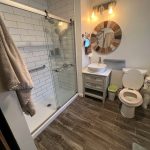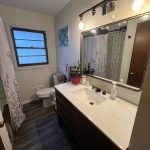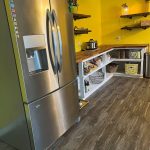by Ashley

Salary Transparency in Public Institutions
As a state employee at a public institution, all salary information is part of the public record. This level of transparency can be incredibly useful, especially when negotiating a raise. Having access to concrete data allows employees to advocate for equitable pay by directly comparing their salaries to those of their peers.
While I don’t regularly sift through the salary archives, I do check them occasionally to ensure I’m being fairly compensated. The 2025 salary data were just released, so it had been on my mind when I recently attended a conference and ran into an old colleague and grad school buddy. Out of curiosity, I looked him up – and was shocked by what I discovered!
A Shocking Salary Jump
About five years ago, this colleague and I were earning roughly the same salary. That in itself was a bit surprising since he held a higher rank at the time, meaning I was actually being paid quite well (yay!).
But the real shock came when I saw how his salary had skyrocketed in just a few years. From 2022 to 2025, his pay increased by nearly $100,000. One of those jumps – a $25,000 raise – coincided with a title change and promotion, which made sense to me. But the other $75,000? That came from two separate raises: a modest $5,000 increase in 2023, and a massive raise just this year. No title change. No obvious explanation. Just a huge leap in salary.
The Taboo of Talking About Money
After work that day, I mentioned this to my husband, expressing my excitement for my colleague and curiosity about how he managed such a significant pay increase. My husband’s response was simple: “You know him…why don’t you just ask?”
And that’s where I hit a wall. I, personally, love discussing any and everything money related – budgeting, debt, savings, investments, salaries, raises and promotions, taxes, side hustles, student loans, etc. etc. etc. It’s likely why I’ve enjoyed blogging here so much! But even so, it’s not easy to ask others about their finances. It’s one thing to be open about my own financial situation; it’s another to inquire about someone else’s. Money remains a taboo topic, especially in professional settings.
Should I Reach Out?
To provide some background, this colleague was a few years ahead of me in grad school and acted as an unofficial mentor early in my career. When I first started in my current role in 2015, he gave me valuable advice on navigating the position. While we’re always friendly when we cross paths, we’ve drifted apart and no longer keep in touch regularly.
So now I’m left wondering: Should I reach out?
I’m considering asking for a Zoom meeting and framing the conversation around career advice. By expressing interest in how he has progressed in rank and title, I might naturally open the door for him to share insights into his career trajectory. I wouldn’t bring up salary directly, as that feels inappropriate and rude. But I’d be hoping the discussion may steer in that direction, as that’s where I’m genuinely curious about how he was able to attain such success.
What Would You Do?
Would you reach out to an old colleague to ask for career advice, hoping to gain some insight into salary growth along the way? Or would you let it go and move on? I’d love to hear your thoughts!

Hi, I’m Ashley! Arizonan on paper, Texan at heart. Lover of running, blogging, and all things cheeeeese. Early 40s, married mother of two, working in academia. Trying to finally (finally!) pay off that ridiculous 6-digit student loan debt!





